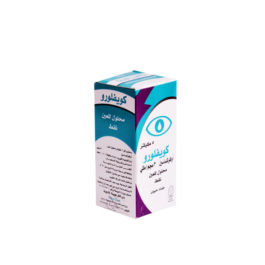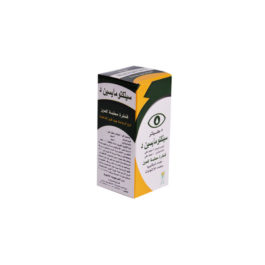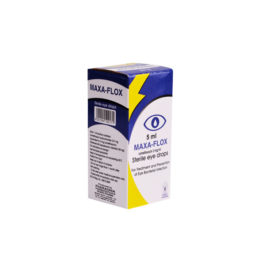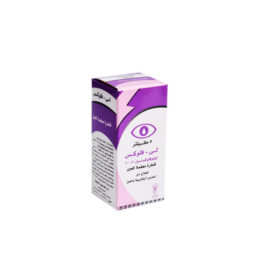Description
THERAPEUTIC INDICATIONS:
– Polyvision is indicated for the treatment of corneal ulcers and superficial infections of the eye and adnexa caused by susceptible strains of bacteria.
– Consideration should be given to official guidance on the appropriate use of antibacterial agents.
POSOLOGY AND METHOD OF ADMINISTRATION:
Corneal Ulcers:
– Polyvision must be administered in the following intervals, even during night time:
– On the first day, instil 2 drops into the affected eye every 15 minutes for the first six hours and then 2 drops into the affected eye every 30 minutes for the remainder of the day.
– On the second day, instil 2 drops in the affected eye hourly.
– On the third to the fourteenth day, place two drops in the affected eye every 4 hours. If the patient needs to be treated longer than 14 days, the dosing regimen is at the directions of the attending physician.
Superficial Ocular Infection:
– The usual dose is one or two drops in the affected eye(s) four times a day. In severe infections, the dosage for the first two days may be one or two drops every two hours during waking hours.
– For either indication a maximum duration of therapy of 21 days is recommended.
Children:
– The safety and efficacy of Polyvision in children under the age of 1 year has not been established. The dosage in children above the age of 1 year is the same as for adults.
CONTRAINDICATIONS:
– Hypersensitivity to the active substance or to any of the excipients.
– Hypersensitivity to quinolones.
SPECIAL WARNINGS AND PRECAUTIONS FOR USE:
– The clinical experience in children less than one year old, particularly in neonates is very limited. The use of Polyvision eye drops in neonates with ophthalmia neonatorum of gonococcal or chlamydial origin is not recommended as it has not been evaluated in such patients. Neonates with ophthalmia neonatorum should receive appropriate treatment for their condition.
– When using Polyvision eye drops one should take into account the risk of rhinopharyngeal passage which can contribute to the occurrence and the diffusion of bacterial resistance
– Serious and occasionally fatal hypersensitivity (anaphylactic) reactions, some following the first dose, were observed in patients receiving treatment based on systematically administered quinolones. Some reactions were accompanied by cardiovascular collapse, loss of consciousness, tingling, pharyngeal or facial oedema, dyspnea, urticaria and itching. Only a few patients had a history of hypersensitivity reactions.
– Ciprofloxacin should be discontinued at the first appearance of skin rash or any other sign of hypersensitivity.
– As with all antibacterial preparations prolonged use may lead to overgrowth of non-susceptible bacterial strains or fungi. If superinfection occurs, appropriate therapy should be initiated.
– During therapy, soft contact lenses should not be worn.
– The product contains benzalkonium chloride so it may cause eye irritation.
– Avoid contact with soft contact lenses.
– Remove contact lenses prior to application and wait at least 15 minutes before reinsertion .
– It is known to discolour soft contact lenses.
INTERACTION WITH OTHER MEDICINAL PRODUCTS AND OTHER FORMS OF INTERACTION:
-Specific drug interaction studies have not been conducted with ophthalmic ciprofloxacin.
-However, the systemic administration of some quinolones has been shown to elevate plasma concentrations of theophylline, to interfere with the metabolism of caffeine, and to enhance the effect of the oral anticoagulant, warfarin, and its derivatives. Transient elevation in serum creatinine has been reported in patients receiving cyclosporine concomitantly with systemic ciprofloxacin.
PREGNANCY AND LACTATION:
– As there are no controlled studies in pregnant women, Polyvision should be used during pregnancy only if the potential benefit justifies the potential risk to the foetus.
– Excretion of ciprofloxacin into human milk following topical ophthalmic administration has not been investigated. Therefore, caution should be exercised when Polyvision is administered to nursing mothers.
UNDESIRABLE EFFECTS:
– Local burning and ocular discomfort may occur as well as itching, foreign body sensation, lid margin crusting, crystals/scales, conjunctival hyperaemia and bad taste following instillation. Additionally, corneal staining, keratopathy/keratitis, allergic reactions, lid oedema, tearing, photophobia, corneal infiltrates, nausea and decreased vision have been reported. Hypersensitivity reactions cannot be excluded.
– In patients with corneal ulcer and frequent administration of the drug, white precipitates have been observed which resolved after continuous application of Polyvision. The precipitate does not preclude the continued use of Polyvision nor does it adversely affect the clinical course of the ulcer or the visual outcome. The onset of the precipitate was within 24 hours to 7 days after starting therapy. Resolution of the precipitate varied from immediately to 13 days after therapy commencing.
– With locally applied fluoroquinolones (generalized) rash, toxic epidermolysis, dermatitis exfoliative, Stevens-Johnson syndrome and urticaria occur very rarely.
– In isolated cases blurred vision, decreased visual acuity and medication residue have been observed with ophthalmic ciprofloxacin.
OVERDOSE:
A topical overdose of Polyvision may be flushed from the eye(s) with warm tap water.-
Pharmacological properties:
PHARMACODYNAMIC PROPERTIES:
– Ciprofloxacin has cidal and inhibitory activities against bacteria which result from an interference with DNA gyrase, an enzyme needed by the bacterium for the synthesis of DNA. Thus, vital information from the bacterial chromosomes cannot be transcribed, which causes a break-down of bacterial metabolism.
– Ciprofloxacin has a very high in vitro activity against almost all gram negative microorganisms including Pseudomonas aeruginosa. It is also effective against gram positive bacteria, such as Staphylococci and Streptococci. Anaerobes are in general less susceptible.
– Resistance development against ciprofloxacin occurs infrequently. A plasmid-mediated bacterial resistance does not appear to occur with the fluoroquinolone class of antibiotics.
– The arthropathogenic potential of some quinolones in immature animals after oral administration is recognised. Topical ocular administration of ciprofloxacin to immature animals did not cause any arthropathy and there is no evidence that the ophthalmic dosage form has any effect on the weight bearing points.
PHARMACOKINETIC PROPERTIES:
After topical ocular administration, ciprofloxacin is also absorbed systemically.
PACKING: A carton box containing a dropper bottle of 5 ml and a pamphlet.
STORAGE:
– Keep at a temperature not exceeding 30C.
– Keep out of reach of children.







Reviews
There are no reviews yet.